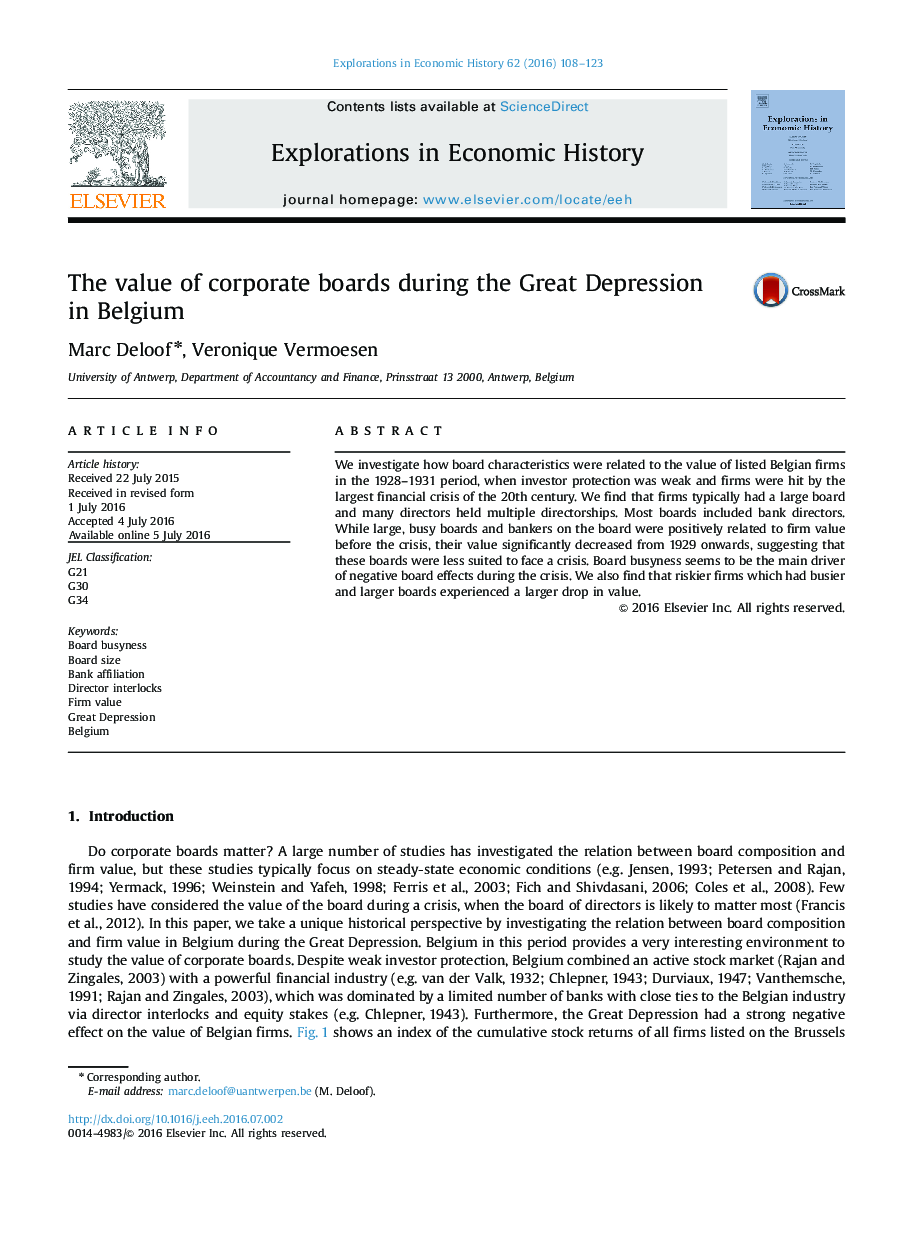| Article ID | Journal | Published Year | Pages | File Type |
|---|---|---|---|---|
| 5068651 | Explorations in Economic History | 2016 | 16 Pages |
We investigate how board characteristics were related to the value of listed Belgian firms in the 1928-1931 period, when investor protection was weak and firms were hit by the largest financial crisis of the 20th century. We find that firms typically had a large board and many directors held multiple directorships. Most boards included bank directors. While large, busy boards and bankers on the board were positively related to firm value before the crisis, their value significantly decreased from 1929 onwards, suggesting that these boards were less suited to face a crisis. Board busyness seems to be the main driver of negative board effects during the crisis. We also find that riskier firms which had busier and larger boards experienced a larger drop in value.
